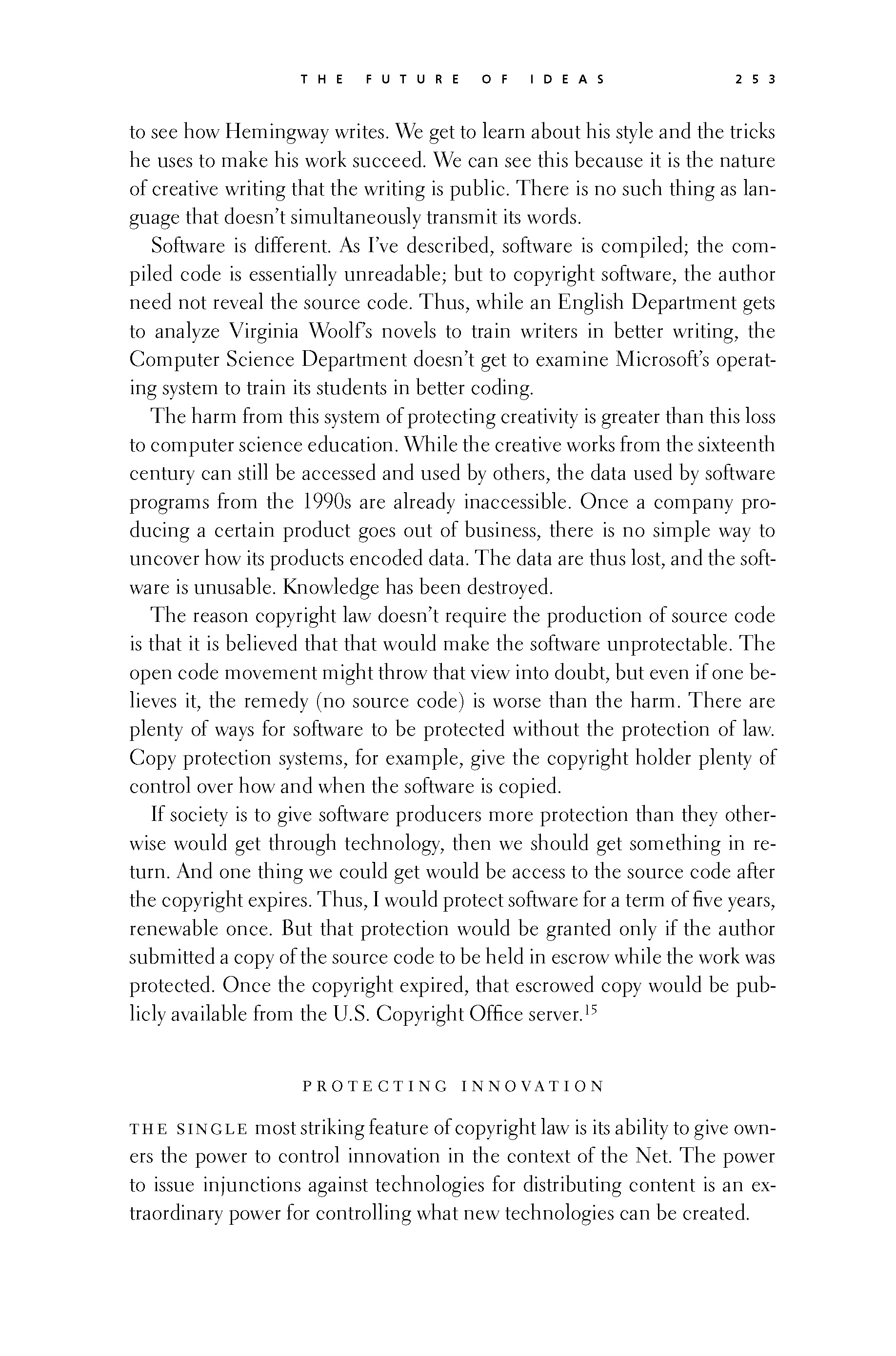 p252 _
-chap- _
toc-1 _
p253w _
toc-2 _
+chap+ _
p254
p252 _
-chap- _
toc-1 _
p253w _
toc-2 _
+chap+ _
p254
to see how Hemingway writes. We get to learn about his style and the tricks
he uses to make his work succeed. We can see this because it is the nature
of creative writing that the writing is public. There is no such thing as lan-
guage that doesn't simultaneously transmit its words.
Software is different. As I've described, software is compiled; the com-
piled code is essentially unreadable; but to copyright software, the author
need not reveal the source code. Thus, while an English Department gets
to analyze Virginia Woolf's novels to train writers in better writing, the
Computer Science Department doesn't get to examine Microsoft's operat-
ing system to train its students in better coding.
The harm from this system of protecting creativity is greater than this loss
to computer science education. While the creative works from the sixteenth
century can still be accessed and used by others, the data used by software
programs from the 1990s are already inaccessible. Once a company pro-
ducing a certain product goes out of business, there is no simple way to
uncover how its products encoded data. The data are thus lost, and the soft-
ware is unusable. Knowledge has been destroyed.
The reason copyright law doesn't require the production of source code
is that it is believed that that would make the software unprotectable. The
open code movement might throw that view into doubt, but even if one be-
lieves it, the remedy (no source code) is worse than the harm. There are
plenty of ways for software to be protected without the protection of law.
Copy protection systems, for example, give the copyright holder plenty of
control over how and when the software is copied.
If society is to give software producers more protection than they other-
wise would get through technology, then we should get something in re-
turn. And one thing we could get would be access to the source code after
the copyright expires. Thus, I would protect software for a term of five years,
renewable once. But that protection would be granted only if the author
submitted a copy of the source code to be held in escrow while the work was
protected. Once the copyright expired, that escrowed copy would be pub-
licly available from the U.S. Copyright Office server.[14-15]
/tab\/tab\PROTECTING INNOVATION/tab\/tab\
The single most striking feature of copyright law is its ability to give own-
ers the power to control innovation in the context of the Net. The power
to issue injunctions against technologies for distributing content is an ex-
traordinary power for controlling what new technologies can be created.
[[253]]
p252 _
-chap- _
toc-1 _
p253w _
toc-2 _
+chap+ _
p254